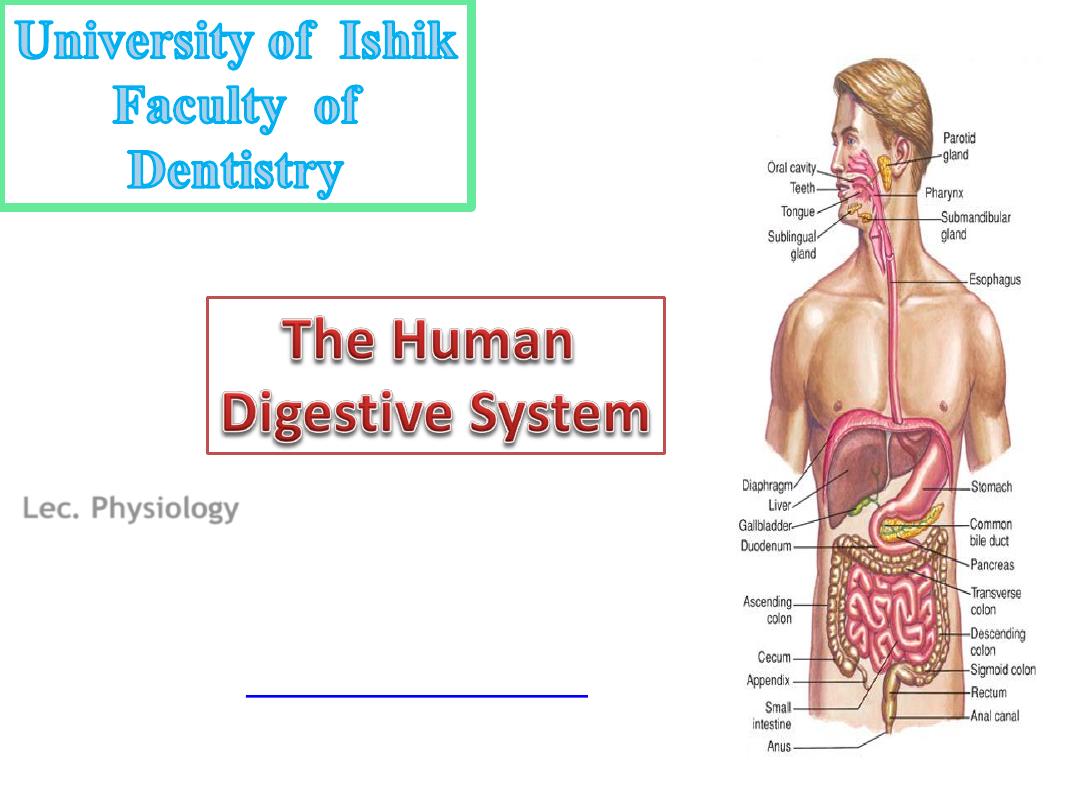
Large intestine
• Overall function to complete absorption, produce certain
vitamins, and form and expel feces
• 4 major regions –
cecum
,
colon
,
rectum
, and
anal canal
• Ileocecal sphincter
between small and large intestine
• Colon divided into
ascending
,
transverse
,
descending
and
sigmoid
• Opening of anal canal (anus) guarded by internal anal
sphincter of smooth muscle and external anal sphincter
of skeletal muscle
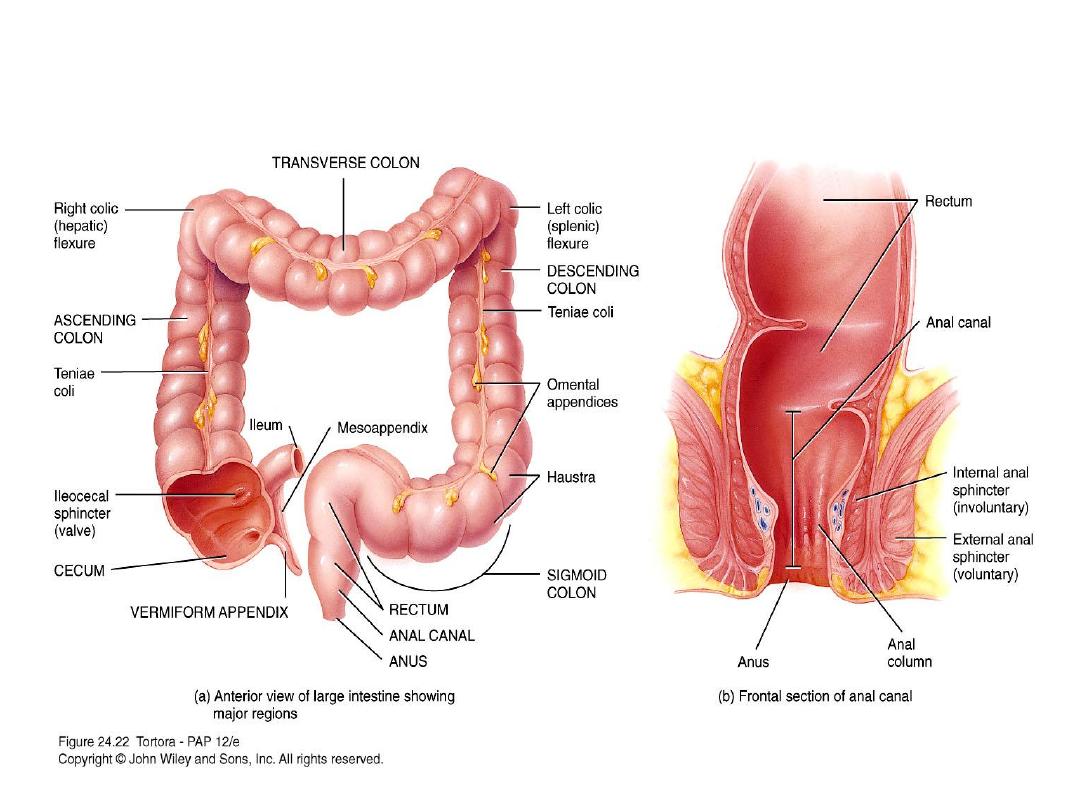
Anatomy of the large intestine

Large Intestine
• Same 4 layers
• Mucosa
– mostly
absorptive
and
goblet cells
– No circular folds or villi
– Does have microvilli
• Submucosa
• Muscularis
– Longitudinal muscle modified to form teniae coli
– Forms haustra – pouches
• Serosa

Digestion of the Large Intestine
• Mechanical digestion
– Peristalsis
– Mass peristalsis – drives contents of colon toward rectum
• Chemical digestion
– Final stage of digestion through bacterial action
• Ferment carbohydrates, produce some B vitamins and vitamin K
– Mucus but no enzymes secreted
• Remaining water absorbed along with ions and some
vitamins

Secretions of Large Intestine
• Mucus provides protection
–
Parasympathetic stimulation increases rate of
goblet cell secretion
•
Pumps
–
Exchange of bicarbonate ions for chloride ions
–
Exchange of sodium ions for hydrogen ions
• Bacterial actions produce gases called flatus
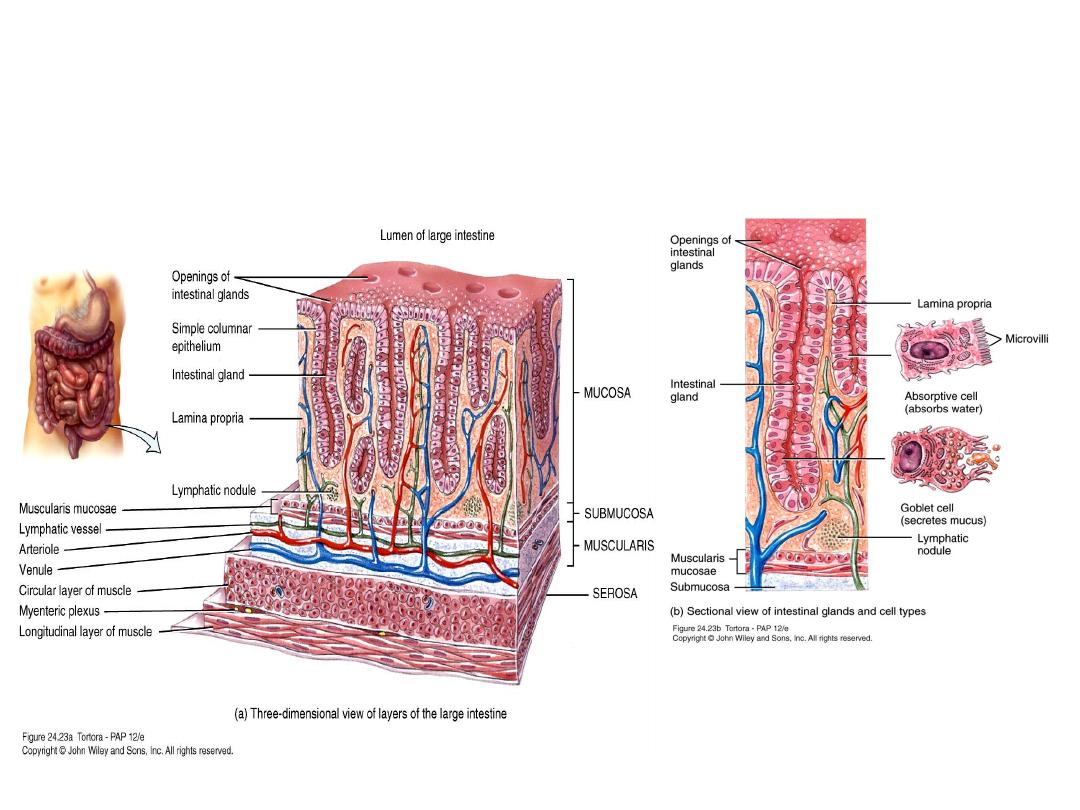
Histology of the large intestine
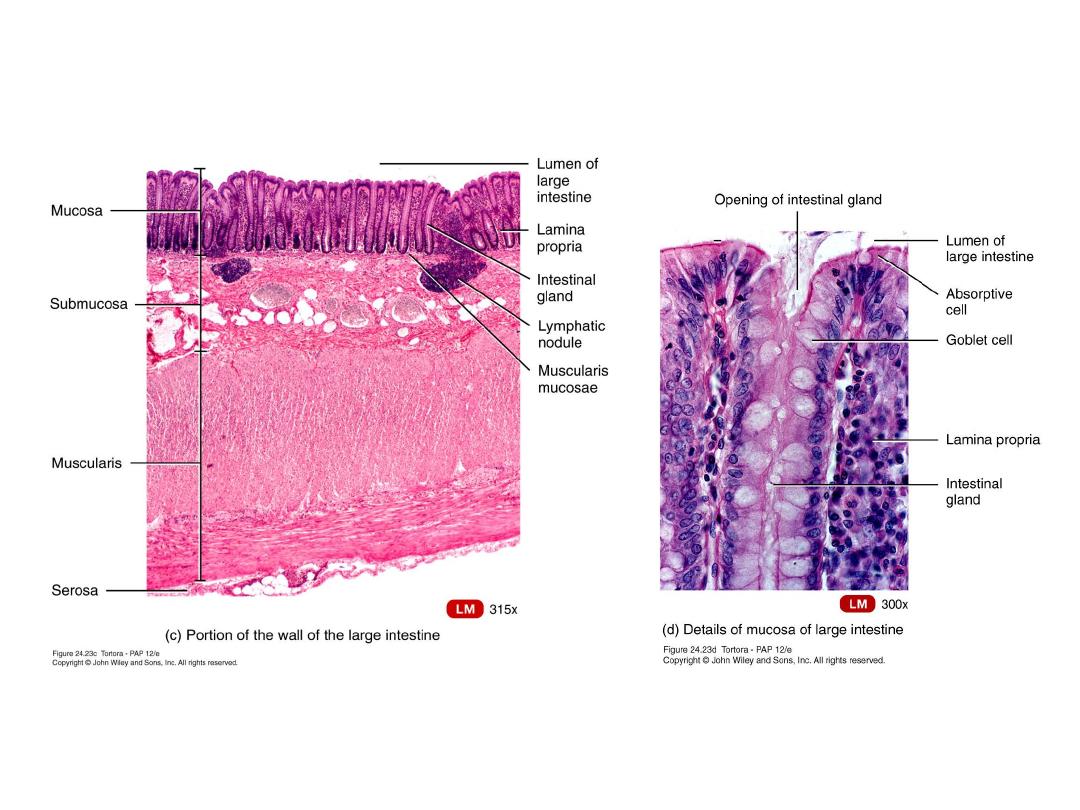
Copyright 2009, John Wiley & Sons, Inc.
Histology of the large intestine

Phases of digestion
• Cephalic phase
– initial taste of food activates neural centers –
prepares mouth and stomach for food to be eaten
• Gastric phase
– Neural and hormonal mechanisms promote gastric
secretion and motility
• Intestinal phase
– Begins when food enter small intestine
– Slows exit of chyme from stomach
– Stimulates flow of bile and pancreatic juice
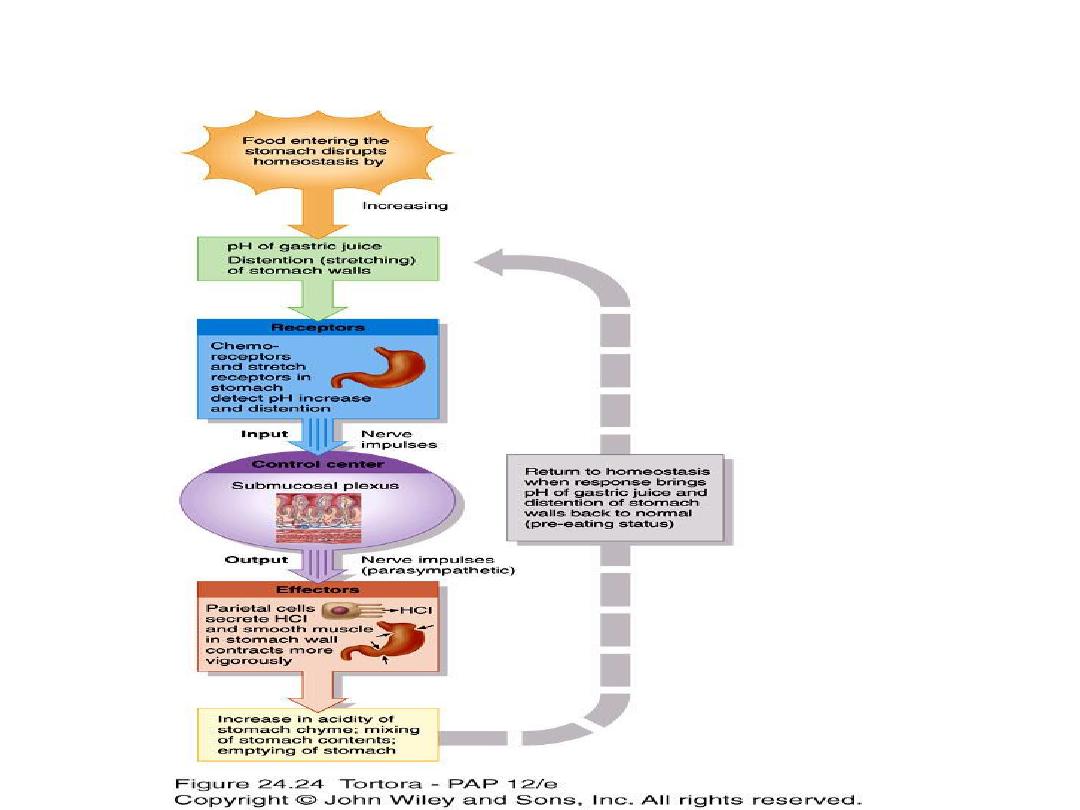
The gastric phase of digestion
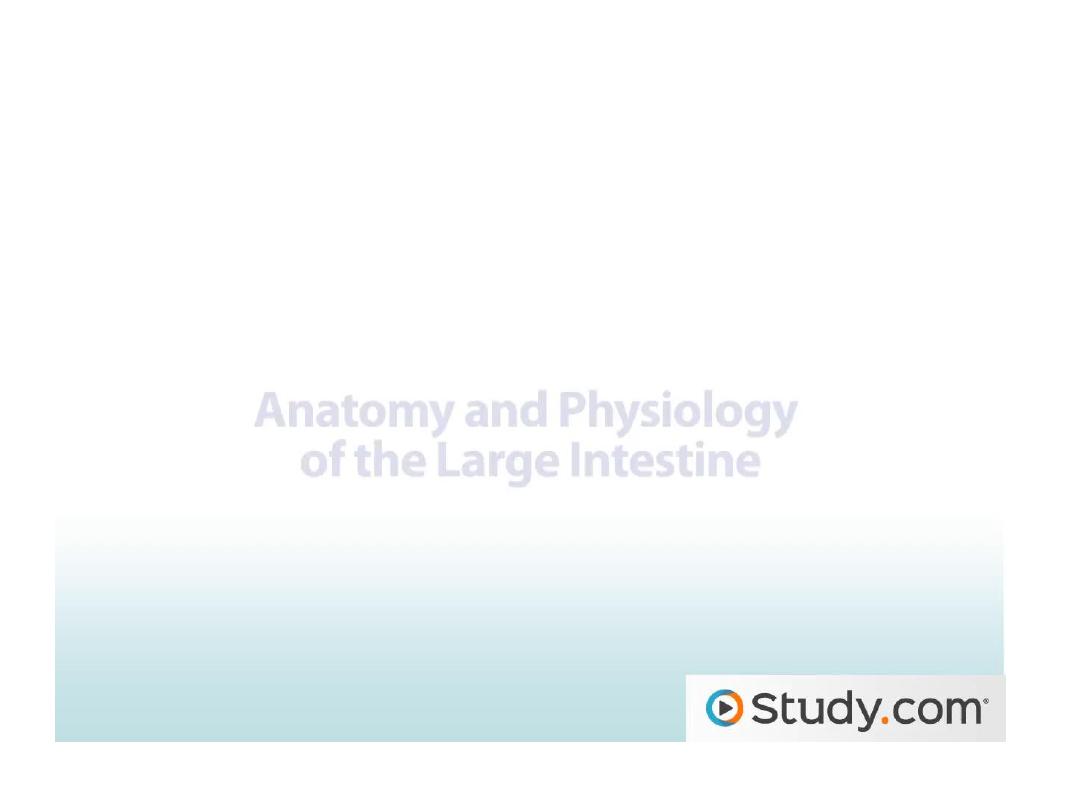
Anatomy and physiology of the Large
Intestine

